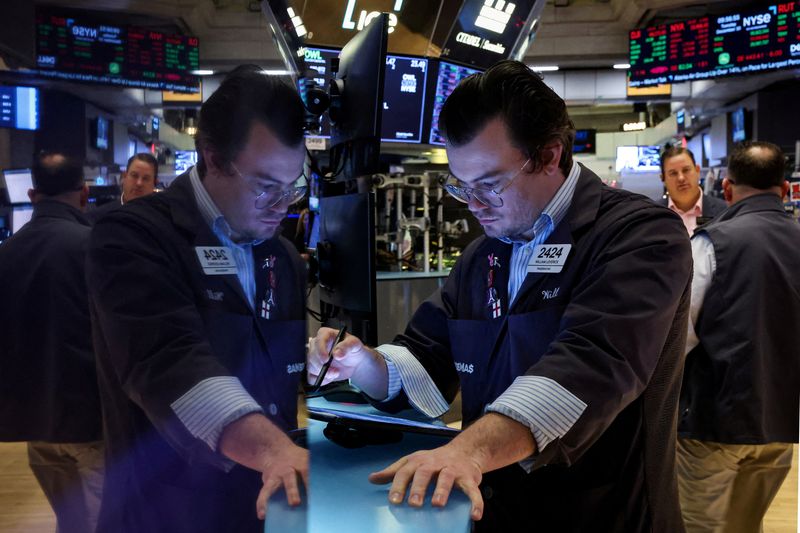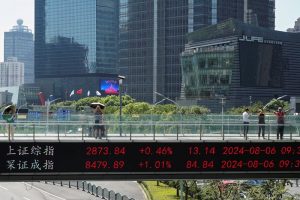
By Stephen Culp and Alden Bentley
NEW YORK (Reuters) -Wall Street closed mixed on Thursday and the U.S. benchmark Treasury yield eased after scaling the highest level since May in light, directionless post-Christmas trading.
The dollar was flat, crude oil fell, and gold rose.
The three U.S. stock indexes were all nearly unchanged, paring mild early declines and interrupting what looked early this week like a nascent “Santa Claus rally,” in which shares get a seasonal boost from low liquidity, tax-loss harvesting and investment of year-end bonuses.
With only a handful of trading days remaining in the year, the Nasdaq, S&P 500 and the Dow have scored respective gains of 33%, 26% and 14% in 2024.
The major concerns for 2025 are the extent of the Fed’s monetary easing, Trump’s tariffs and other policies, and various geopolitical tensions.
New U.S. claims for unemployment benefits dipped to the lowest in a month last week, consistent with a cooling but still-healthy U.S. labor market.
The Dow Jones Industrial Average edged up 0.07% to 43,325.80, the S&P 500 fell 0.04% to 6,037.59 and the Nasdaq Composite fell 0.05% to 20,020.357.
“It’s light volume and now we are recovering some earlier losses due to some profit taking from Tuesday’s rally,” said Peter Cardillo, chief market economist at Spartan Capital Securities in New York. “I think we’re in the Santa Claus rally, with a little bit of a bump in the road here today, and it’s probably safe to say the year-end rally will continue.”
MSCI’s gauge of stocks across the globe rose 0.06%, appearing on course to wrap up the year with a second consecutive annual gain of more than 17%, unfazed by escalating geopolitical tensions and economic headwinds.
Japan’s Nikkei rose 1.12%. MSCI’s broadest index of Asia-Pacific shares outside Japan closed 0.14% lower but remained on track for a weekly gain.
European markets were closed for a second straight day on Thursday while London traders got Boxing Day off.
The Federal Reserve’s less dovish messaging about lowering rates further next year, weighed on Treasuries and helped elevate the 10-year yield to its highest since early May. It peaked at 4.641, gaining steadily from around 4.10% early this month.
“We’re probably on the way to 4.75% to 5.0% on the 10-year note and the reason for that is that the bond market is full of uncertainties, while the stock market is full of enthusiasm,” Cardillo said. “The bond market is projecting a hawkish Fed going into probably the first half of the year.”

